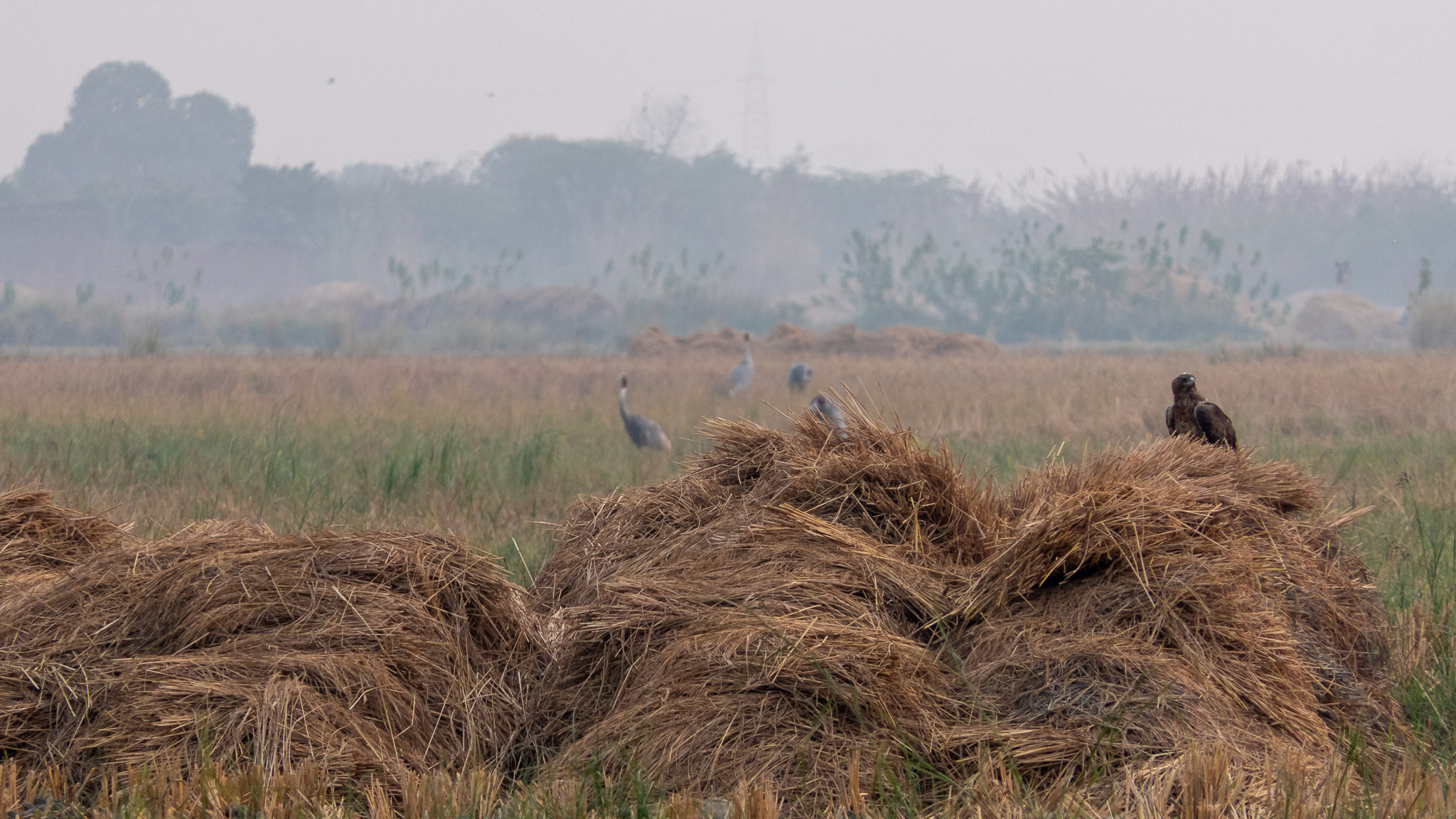by Joe Eaton

(Full article from RATS Tales August 21, 2024)
Relatively small as eagles go, the Bonelli’s eagle is an osprey-sized raptor with a patchy but extensive range, from western Europe and northwestern Africa to Indonesia. While not globally threatened, the species has experienced an alarming decline in Spain, with 116 pairs lost since the 1980s. In contrast, populations of its larger relatives, the golden eagle and the endangered and endemic Spanish eagle, are stable or increasing.
New research suggests anticoagulant rodenticides (ARs) may be to blame.
In a recent article in the journal Environmental Pollution, Toni Vicedo of the Universidad de Murcia and other Spanish scientists report that the livers of 17 eagles that died in the Valencia region all contained at least four different ARs, with seven in one sample. They point to possible sublethal effects of AR exposure, and propose the Bonelli’s eagle as a sentinel species for human AR risk because its preferred prey species are also sought by hunters.
The Valencian Community in southeastern Spain contains a matrix of urban and rural landscapes, with recent suburban sprawl. The local Bonelli’s eagle population, 55 breeding pairs as of 2020, covers wide swathes of open country searching for rabbits, pigeons, and partridges. They’re not known to eat carrion. The eagles in the study were found dead or dying between 2015 and 2022. Six birds had collided with structures, seven were electrocuted by power lines, and one had been shot. In addition to testing for ARs, the scientists analyzed land-use variables for potential exposure patterns.
This is one of only a few raptor studies to find 100 percent exposure in a sample. All 17 eagles were positive for the second-generation ARs (SGARs) bromadiolone, brodifacoum, difenacoum, and flocoumafen. A fifth SGAR, difethialone, was present in 88 percent. The first-generation AR (FGAR) chlorophacinone was found in 59 percent, and four other FGARs—including diphacinone, not registered for use in Spain—were also detected. Three birds had been exposed to the five SGARs plus chlorophacinone and diphacinone. Bromadiolone had the highest average concentrations, followed by brodifacoum, mirroring earlier findings of exposure in red foxes in the region. FGAR concentrations were much lower than SGARs. Although none of the deaths were directly attributable to AR poisoning, 35 percent of the eagles had levels known to cause adverse effects in raptors.

Several potentially significant patterns emerged from the data. FGAR exposure was more associated with death by collision, SGAR exposure with electrocution. This could mean that FGARs and SGARs have different kinds of sublethal effects, impairing the eagles’ ability to avoid manmade hazards in different ways. The authors also note the possibility of synergistic effects among the various ARs.
SGAR exposure appeared to be related to rainfall (a proxy for non-irrigated farming) and intensive agriculture, while FGAR exposure increased with pig density, presumably because of chlorophacinone use on pig farms. Since two other raptor species in the study area, an osprey and a short-toed eagle, had much lower AR concentrations, something about the natural history of the Bonelli’s eagle may make it particularly vulnerable. (Finding any levels of ARs in the fish-eating osprey adds to a growing body of evidence that rodenticides are entering aquatic food webs.)
“Our results suggest that anticoagulant rodenticides are ingested by non-target species, which are prey for Bonelli’s eagle (rabbits, partridges, turtledoves, etc.), leading to a greater risk of secondary poisoning in this species,” Vicedo and his co-authors conclude. Based on earlier research, the use of rodenticides against crop pests is probably involved. In 2007, domestic pigeons in the Castilla y León region died after eating chlorophacinone-treated grain that was spread in fields during a vole outbreak. A review article published in 2012 noted the presence of ARs in hares and grain-eating birds, including partridges, doves, larks, and starlings, in several Spanish regions between 2005 and 2010.
The authors of the new article report that while rabbits are considered crop pests in some districts, they found no significant differences between eagle samples from those districts and others. A recent news article reports the use of unspecified “rat poison” to kill rabbits on a farm in the study area and the official reaction to it: a Guardia Civil spokesperson said the use of poison in a natural setting was “completely prohibited’ because of potential food web effects. Otherwise, it’s not clear how ARs are currently used on pig farms or in other kinds of agriculture.
“AR exposure pathways in Bonelli’s eagle seem to be clear and warn of a possible hazard for human health,” the authors caution.
There’s little overlap between the diets of most human populations and those of most raptor species, but the Bonelli’s eagle is an exception. Spanish rabbit and gamebird hunters who bring their kills home for dinner (“a deeply rooted custom”) risk the consequences of AR exposure. That’s also true of those who hunt Spanish wild boars, whose livers have been found to contain potentially dangerous AR concentrations. Bonelli’s eagle, Vicedo and his colleagues suggest, could be an important sentinel species for AR risks to humans. Like eagles and foxes, recreational and subsistence hunters (like fishers) are part of food webs increasingly permeated by rodenticides.
